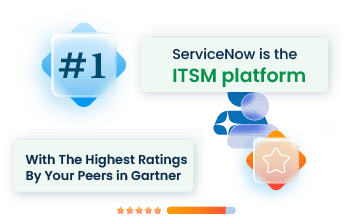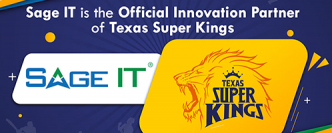“Your business relies on vendors, but managing their risks is a complex challenge that could lead to disruptions, financial loss, and compliance issues. Manual vendor risk management processes are time-consuming, error-prone, and may not provide the comprehensive oversight needed to protect your business.
ServiceNow’s Vendor Risk Management solution streamlines the entire process, providing a centralized platform to identify, assess, and mitigate vendor risks efficiently. With ServiceNow, you can ensure compliance, safeguard your operations, and maintain strong vendor relationships for long-term success.
In this blog, we will explore the key components of vendor risk management and how ServiceNow can empower your business to proactively manage vendor relationships and protect your bottom line.
Understanding Vendor Risk Management with ServiceNow
ServiceNow’s Vendor Risk Management (VRM) solution helps businesses manage and reduce risks associated with vendors. It offers a centralized platform where companies can monitor and assess vendor performance, ensuring they meet regulatory and internal standards.
Key features for business and tech leaders include automated risk assessments, real-time monitoring, and detailed reporting. Automated risk assessments help businesses quickly spot and address potential risks, saving time and resources. Real-time monitoring provides continuous oversight, alerting teams to issues as they arise. Detailed reporting offers clear analytics and visualizations, helping decision-makers understand risk patterns and make informed decisions.
Benefits of ServiceNow Vendor Risk Management
ServiceNow’s Vendor Risk Management (VRM) solution offers many benefits for businesses managing vendor-related risks. Here are some key advantages:
Risk Reduction: By identifying and addressing potential risks early, ServiceNow helps prevent disruptions and protect business operations.
Compliance: Ensures vendors meet all regulatory and internal standards, reducing the chances of legal issues and fines.
Efficiency: Automates risk assessments and monitoring, saving time and resources that can be used for other important tasks.
Improved Decision-Making: Provides real-time insights and detailed reports that help executives and decision-makers make better choices.
Enhanced Collaboration: Integrates smoothly with existing workflows, promoting better communication and teamwork across departments.
Cost Savings: Cuts down on manual processes, leading to significant cost savings and better use of resources.
When comparing ServiceNow VRM with other solutions, several factors stand out:
Comprehensive Features: Unlike many VRM tools that only focus on specific areas, ServiceNow offers an all-in-one solution, covering risk assessment, monitoring, and reporting.
User-Friendly Interface: ServiceNow’s intuitive dashboards and smooth integration make it easier for businesses to adopt and use effectively.
Business Value and ROI: Companies using ServiceNow VRM report higher ROI due to better risk management, improved compliance, and greater operational efficiency.
Key Features of ServiceNow Vendor Risk Management
ServiceNow Vendor Risk Management (VRM) offers several powerful features to help businesses manage vendor risks effectively. Here’s a detailed look at the key features and how they benefit both business and tech users:
Automated Risk Assessments: This feature makes evaluating vendor risks easier. By automating assessments, businesses save time and reduce errors, ensuring every vendor gets a thorough review. Tech teams can then focus on strategic tasks, while business leaders get clear insights into vendor risks.
Real-Time Monitoring: ServiceNow provides continuous oversight of vendor activities. This feature helps spot issues as they happen, allowing for quick action to reduce risks. Real-time alerts and dashboards keep both IT and business teams informed, supporting fast decision-making and minimizing disruptions.
Comprehensive Reporting: Detailed analytics and visualizations give a clear view of risk trends and vendor performance. Business executives can use these insights for informed decisions, while IT managers can efficiently track compliance and performance metrics. Customizable reports ensure all stakeholders get the information they need.
Integration with Existing Workflows: ServiceNow VRM integrates smoothly with other enterprise systems, enhancing collaboration across departments. This integration reduces manual data entry and improves accuracy, making risk management processes more efficient. Tech teams can spend less time on routine tasks and more on innovation.
Vendor Onboarding and Offboarding: This feature simplifies the process of adding new vendors and removing those no longer needed. Automated workflows ensure all necessary checks are completed, reducing the risk of onboarding non-compliant vendors. This is especially useful for business managers who need to maintain a streamlined and compliant vendor base.
Implementing ServiceNow VRM: A Step-by-Step Guide
Implementing ServiceNow Vendor Risk Management (VRM) involves several structured steps to ensure a smooth transition and effective use. This guide provides detailed steps, key considerations, and solutions to common challenges, tailored for tech executives and IT managers.
1. Assessment and Planning:
- Evaluate current vendor risk management processes.
- Identify specific needs and goals for the ServiceNow VRM implementation.
- Develop a detailed project plan with timelines, milestones, and resource requirements.
2. Resource Allocation:
- Assign a dedicated project team, including IT managers, risk management experts, and key stakeholders.
- Ensure a sufficient budget for software licenses, training, and support services.
3. Stakeholder Buy-In:
- Communicate the benefits of ServiceNow VRM to all relevant stakeholders.
- Conduct workshops and meetings to address concerns and gather input.
- Secure executive sponsorship to ensure top-down support and commitment.
4. System Configuration:
- Customize the ServiceNow VRM platform to meet organizational needs.
- Set up automated workflows, risk assessment templates, and reporting dashboards.
- Integrate ServiceNow VRM with existing enterprise systems for seamless data flow.
5. Data Migration:
- Clean and prepare existing vendor data for migration.
- Use ServiceNow’s data migration tools to import data into the new system.
- Verify data accuracy and integrity after migration.
6. Training and Onboarding:
- Develop a comprehensive training program for end-users and administrators.
- Provide hands-on training sessions and create user manuals.
- Ensure ongoing support through a helpdesk or dedicated support team.
7. Testing and Validation:
- Conduct thorough testing of the configured system, including user acceptance testing (UAT).
- Identify and resolve any issues or bugs.
- Validate the system’s performance and reliability.
8. Go-Live and Monitoring:
- Execute the go-live plan, transitioning from the old system to ServiceNow VRM.
- Monitor system performance and user feedback closely.
- Make necessary adjustments to optimize functionality.
Common Challenges and Solutions
- Resistance to Change: Employees may resist new processes. Address this by involving them early in the implementation process and providing comprehensive training.
- Data Quality Issues: Inconsistent or inaccurate data can hinder the migration process. Conduct a thorough data cleaning exercise before migration and validate data accuracy post-migration.
- Integration Complexities: Integrating ServiceNow VRM with existing systems can be complex. Collaborate with ServiceNow experts and use their integration tools to facilitate a smooth process.
Leveraging ServiceNow VRM for your business
ServiceNow Vendor Risk Management (VRM) can greatly improve your business’s ability to manage and reduce risks from third-party vendors. Here’s how to effectively implement and monitor VRM using ServiceNow.
Set Clear Objectives:
- Define what you aim to achieve with ServiceNow VRM, such as better compliance, reduced risk exposure, or improved vendor performance.
Map Out the Implementation Plan:
- Develop a detailed plan with timelines, milestones, and resource allocation. Make sure the plan aligns with your business strategy.
Customize the Platform:
- Tailor ServiceNow VRM to meet your specific needs. Configure workflows, dashboards, and reports to match your organization’s risk management policies.
Automate Risk Assessments:
- Set up automated risk assessments to evaluate vendors regularly. Automation saves time and ensures consistent risk evaluation.
Integrate with Existing Systems:
- Ensure ServiceNow VRM integrates smoothly with other enterprise systems. This integration helps with smooth data flow and thorough risk analysis.
Additional Tools and Integrations
ServiceNow Vendor Risk Management (VRM) becomes even more effective when integrated with other tools and systems. These complementary tools enhance VRM capabilities, providing a more complete risk management solution.
ServiceNow IT Service Management (ITSM):
- Integrating VRM with ITSM allows for smooth incident and problem management. Any issues found in vendor performance can be directly linked to incident tickets, ensuring quick resolution and better vendor accountability.
ServiceNow Governance, Risk, and Compliance (GRC):
- GRC integration helps manage compliance and regulatory requirements more effectively. This combination provides a unified view of all risk and compliance activities, helping businesses stay compliant with industry standards.
Third-Party Risk Management Tools:
- Tools like BitSight and RiskRecon can be integrated with ServiceNow VRM to continuously monitor vendor cybersecurity. These integrations offer real-time insights into the security practices of third-party vendors, helping businesses proactively manage risks.
ERP Systems (e.g., SAP, Oracle):
- Integrating VRM with ERP systems improves financial and procurement risk management. This integration ensures that vendor risk information aligns with procurement and financial data, providing a comprehensive view of vendor-related risks.
Conclusion
Effective Vendor Risk Management (VRM) is essential for protecting business operations. ServiceNow’s VRM solution provides automated risk assessments, real-time monitoring, and detailed reporting to handle vendor-related risks effectively. Integrating with tools like ITSM, GRC, and ERP systems enhances these capabilities, offering a complete approach to risk management. Managing vendor risks strategically ensures operational stability and compliance. Using ServiceNow VRM helps businesses improve oversight, boost efficiency, and strengthen vendor relationships. Explore ServiceNow consulting for customized VRM solutions to safeguard your business from potential risks. Share your thoughts and experiences with VRM in the comments below – we’d love to hear from you!












